Sleepy.txt
Editor | Lin Wanwan
Jia Yueting has figured out the cryptocurrency world.
On October 8, he posted a picture of a car with "BNB" on it on X, captioned "Drive a Binance car, enjoy a Binance life." The meme coin named "Binance Car" saw its market value surge to $30 million within just a few hours.
After the hype peaked, Jia Yueting personally stepped in to clarify: he has never issued a coin.
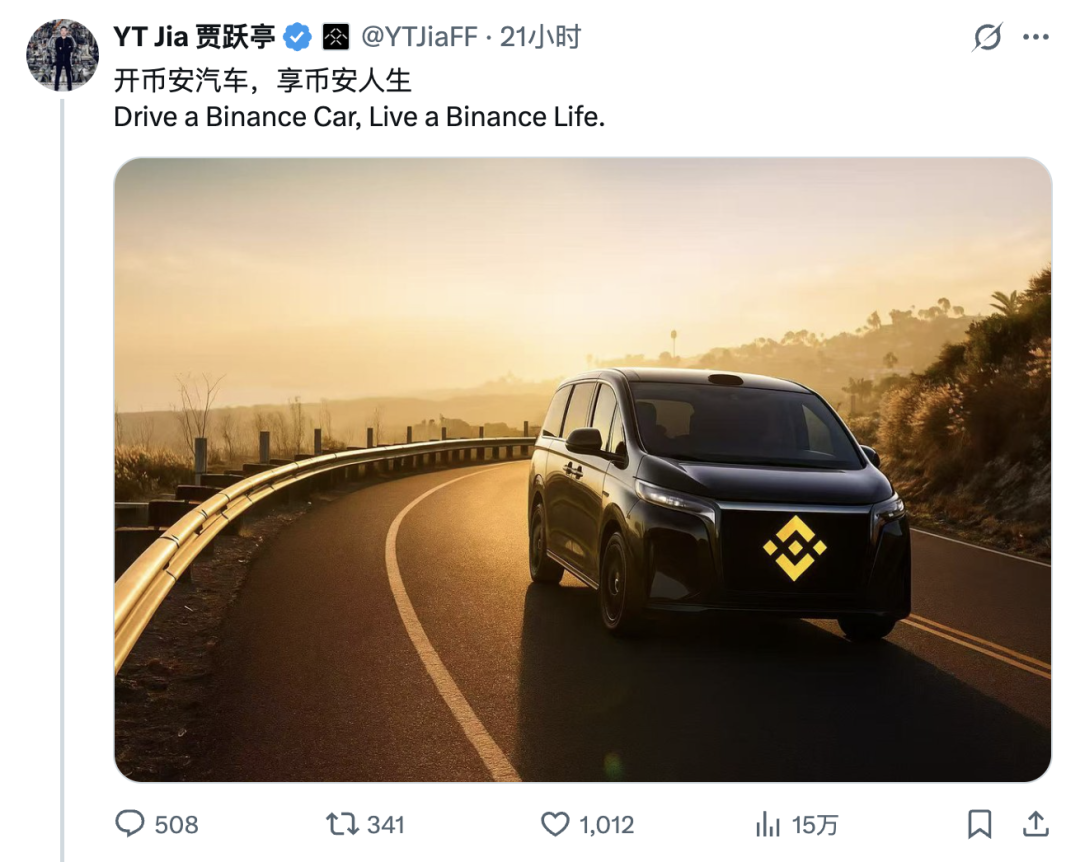
Image source: X
Boss Jia's car manufacturing is still struggling, but he clearly understands how to stir up waves in the crypto world. However, this time, his engagement with the Binance meme was not a coincidence.
Just a few weeks earlier, in September 2025, the crypto asset fund C10 Treasury, managed by Jia Yueting, announced its latest returns, showing a floating profit of about 7%. A few days later, he made a bigger move, spending $41 million to acquire the Nasdaq-listed company QLGN.
If approved by the shareholders' meeting, QLGN will be renamed CXC10 and shift towards cryptocurrency and Web3 business. According to the plan, C10 Treasury will subsequently initiate allocations for the top ten cryptocurrencies.
From content, cars to finance, Jia Yueting has always been looking for a stage to continue his narrative. This time, he has once again tied himself to the crypto world.
More than a decade ago, the lights of the LeTV building in Beijing often shone late into the night. It was an era of ambition, with Jia Yueting standing on stage shouting "ecological revolution," aiming to build a vast future landscape with hardware, content, and finance.
He was like a dream builder, constructing the future with concepts and visions. Investors and media in the audience were ignited by slogans like "disrupting television," "redefining mobile phones," and "creating China's Tesla."
Now, he is in Los Angeles, with the returns of C10 Treasury and the acquisition plan for QLGN becoming new narrative materials. He is using data, compliance, and capital to build a larger story framework.
Is Jia Yueting's transformation a true metamorphosis, or just another case of new wine in an old bottle? The story begins with his fourteen-year entanglement with the crypto world.
The Era of Frenzy
In 2011, Jia Yueting was on the uphill path of life.
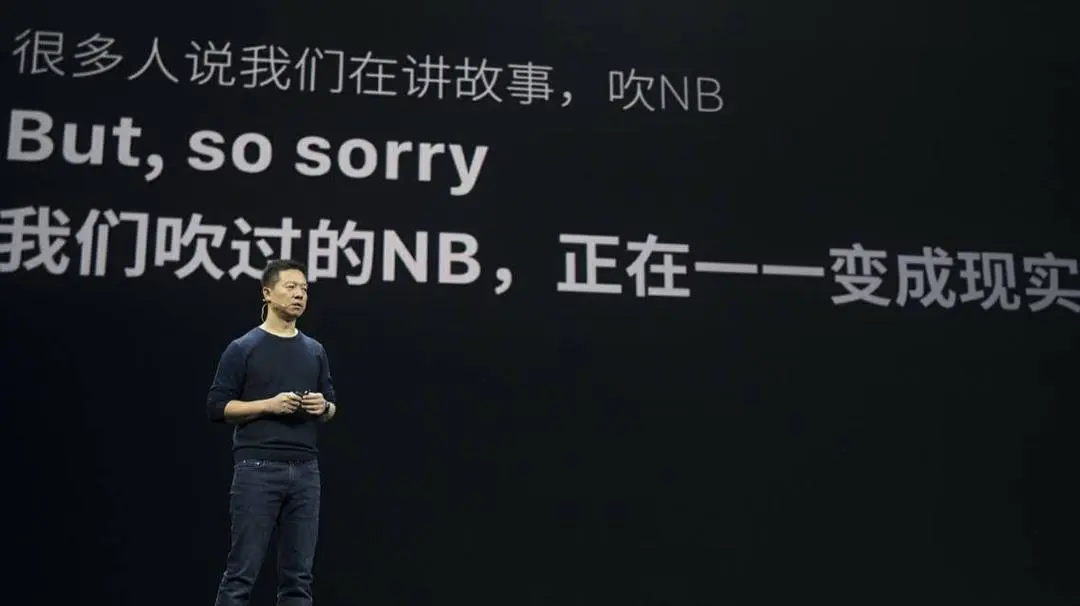
Jia Yueting speaking at a press conference; Image source: Huxiu
LeTV had just landed on the Growth Enterprise Market, becoming "China's first video stock." That year, the company's revenue was 598 million yuan, a year-on-year increase of 151%, with a net profit of 131 million yuan, up 87% year-on-year. But his ambition extended far beyond a video website; he wanted to build an ecosystem spanning content, terminals, platforms, and applications.
That year, Li Ming entered his sight. Li Ming was the technical head of LeTV Cloud, who enjoyed researching Bitcoin in his spare time and running nodes on his home computer. At that time, WeChat had just launched, Alibaba was preparing for an IPO, and Baidu was still the center of the traffic kingdom. Almost no one paid attention to this digital currency experiment.
Jia Yueting, however, took notice. He was always sensitive to new technologies, able to capture the scent of new directions amidst the noisy waves. That intuition made him notice the potential of blockchain earlier than his peers. He began to communicate with Li Ming, asking about the underlying logic of Bitcoin and probing whether this technology, which had yet to attract attention, could become part of the LeTV ecosystem.
From 2012 to 2013, Jia Yueting's "ecological revolution" reached its peak.
He first launched the first-generation Super TV and then the LeTV Box the following year. The logic was simple: hardware subsidies to gain users, content fees to recover costs, and platform effects to amplify profits. This approach was unique at the time; while others were still troubled by copyright fees, he had already figured out how to offset costs through hardware sales.
At that time, Bitcoin's price surged above $1,000 for the first time. Li Ming sent Jia Yueting an email, suggesting adding mining functionality to the LeTV Box and LeTV TV, allowing users to offset a year's membership fee of 499 yuan with the coins they mined.
This proposal involved multiple aspects of hardware, software, networks, and finance, far more complex than conventional products. But it tied hardware, content, digital currency, and user incentives into one system, which was exactly to Jia Yueting's liking. Later, he directly named Li Ming to be responsible for the project at a strategic meeting, breaking the normal reporting chain of the company. "Generally, it shouldn't be the big boss personally assigning someone to be responsible for a project," Li Ming recalled later.
In 2015, LeTV welcomed its shining moment. The annual revenue reached 13.017 billion yuan, a nearly 90% year-on-year increase, and its market value once surpassed 150 billion yuan, becoming a star company on the Growth Enterprise Market. Super TV sales exceeded 3 million units, and the LeTV phone was immediately sought after upon release, while sports copyrights and car manufacturing projects were also launched simultaneously. Jia Yueting's "ecological revolution" finally showed its true power.
That year, he turned his attention to finance. Hardware and content supported the surface of the story, but to keep the entire system running, new pivot points were necessary. He viewed finance as the true lever that could enable the ecosystem to self-circulate.
In August 2015, former Vice President of the Bank of China Wang Yongli officially joined LeTV as CEO of LeTV Finance. To bring him on board, Jia Yueting put in considerable effort. He painted a grand vision for Wang Yongli: to make financial innovation the pillar of the LeTV ecosystem.
After Wang Yongli's arrival, LeTV's financial sector rapidly expanded, including payment, wealth management, insurance, credit, and even blockchain, all listed for exploration. Jia Yueting's task for him was clear: to achieve "ecological revolution" in the financial field as well.
In March 2016, under Jia Yueting's promotion, LeTV Finance announced the establishment of a blockchain laboratory. At that time, most domestic internet companies were still in a wait-and-see phase, with very few specifically establishing laboratories. Jia Yueting required the laboratory not to focus solely on mining or token issuance but to seek landing scenarios related to LeTV's existing business.
Thus, the laboratory began experimenting in several directions, such as embedding blockchain functionality in LeTV Boxes and TVs, turning user devices into nodes; using blockchain to protect copyrights and incentivize content creators with tokens; and exploring chain-based payment, wealth management, and insurance services.
That same year, Jia Yueting began to expand overseas.
He established a subsidiary in the United States, negotiated the acquisition of Vizio's television business, and invested some funds into Faraday Future. Cross-border capital flow became an unavoidable challenge for companies going abroad. Traditional payment channels were costly and slow, requiring layers of regulatory navigation. Blockchain offered another possibility, enabling faster and lower-cost settlements through decentralized networks.
In December of that year, LeTV Finance announced a strategic partnership with Stellar. At that time, Stellar was one of the few public blockchains focused on payments, with rapid transaction confirmations and low energy consumption, making it more suitable for commercial use.
LeTV detailed its blockchain ecological strategy to the Stellar team, explaining the importance of blockchain technology within this strategy. This vision impressed the Stellar team, and both parties quickly reached a cooperation agreement. This partnership marked LeTV's first foray into the international stage of blockchain exploration.
This layout gradually expanded into a complete blueprint. Blockchain was embedded on the hardware side, tokens were used for settlement on the content side, financial exploration included payment and wealth management, and applications extended to identity verification and supply chains. The concept was grand, the pace aggressive, but it was also extremely reliant on funding and internal collaboration.
In 2016, it was too early.
In the second half of the year, LeTV's cash flow began to tighten, the mobile phone business was losing money, and car manufacturing continued to burn cash, while overseas expansion was constantly draining resources.
In November of that year, Jia Yueting internally admitted that the company needed to "hit the brakes." As cash flow tightened, the blockchain laboratory's plans were also forced to be put on hold.
The Twilight of an Empire
From 2016 to 2017, it was a watershed year for Jia Yueting.
That year, the LeTV empire he built began to crumble, and the once-entrepreneurial idol quickly fell into the crosshairs of public opinion.
On November 6, 2016, he released the famous internal letter "The Sea Water and Flames of LeTV: Are We Being Swallowed by the Giant Waves or Boiling the Ocean?"
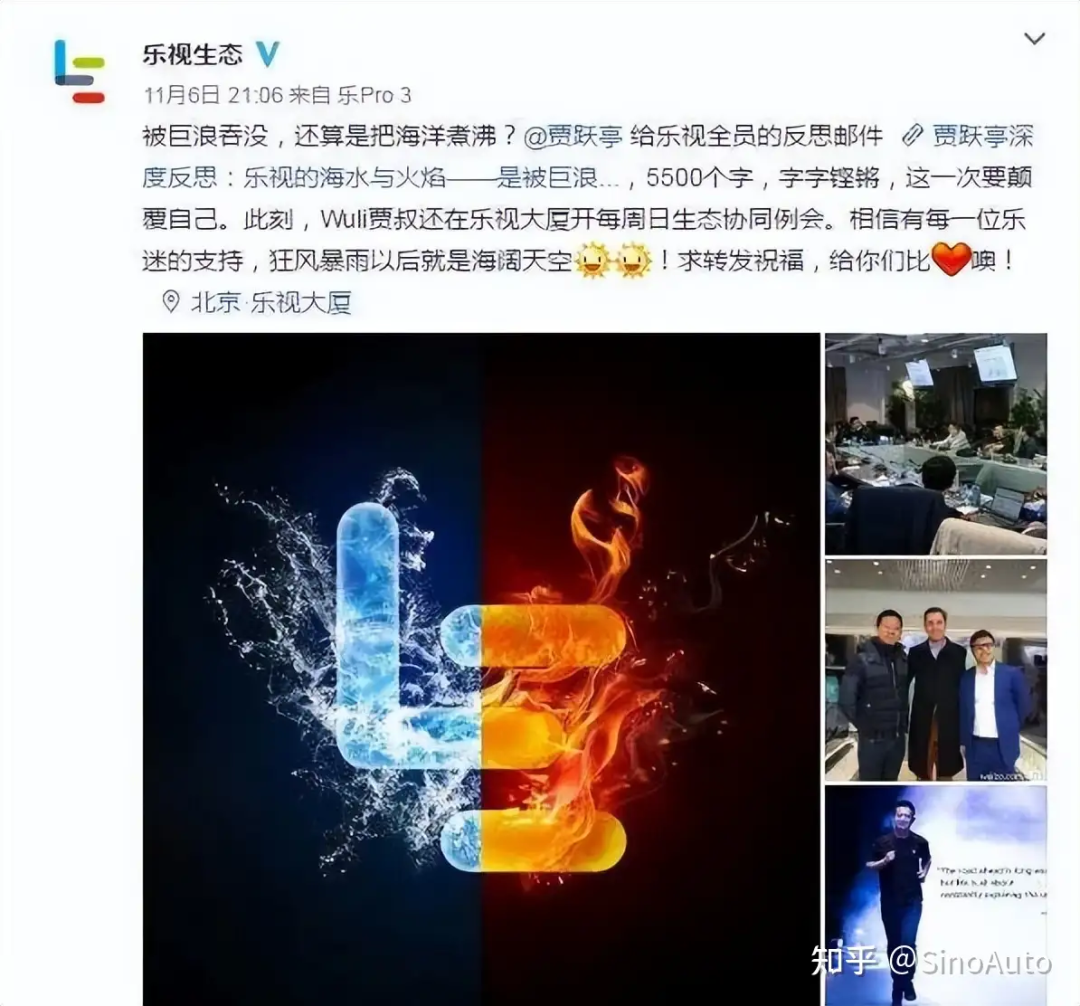
Image source: Weibo
In the letter, he admitted: "The LeTV ecosystem is facing significant challenges; our blind pursuit of scale expansion through a money-burning development model has come to an end."
The release of this letter felt like a belated awakening. Jia Yueting began to confront his decisions over the past few years: scale expansion, blind network laying, and neglecting cash flow. In that nearly uncontrollable growth, he once believed that as long as the ecosystem was large enough, problems would eventually be masked by growth.
But reality quickly proved that every segment of LeTV's business was consuming the same lifeblood. When too many projects drained resources simultaneously, the massive system became an unsustainable cycle.
On July 4, 2017, more than half a year after that internal letter, Jia Yueting boarded a flight to the United States. He claimed it was a short business trip. Later, he never returned.
To the outside world, this was a hasty escape. LeTV was burdened with debt, suppliers were blocking the building's entrance, and pressure from investors and regulators came in waves. From his perspective, this was a strategic shift. Faraday Future's headquarters was in Los Angeles, requiring his presence; the U.S. capital market was more open, and the regulatory framework clearer. He believed that the opportunity for a restart might lie there.
At that time, the U.S. was in the midst of a frenzy over blockchain and cryptocurrencies. Bitcoin prices were hitting new highs, the ICO market was rapidly expanding, and new projects emerged daily, with capital and concepts chasing each other—a stage ignited by desire.
A year later, the wave reached China.
China's blockchain industry also experienced a brief carnival. ICOs became the hottest financing method, with almost every industry trying to attach the "blockchain+" label. Against this backdrop, LeTV's subsidiary LeRong Zhixin launched the "OneChain Box" in collaboration with Yilian Technology on July 11.
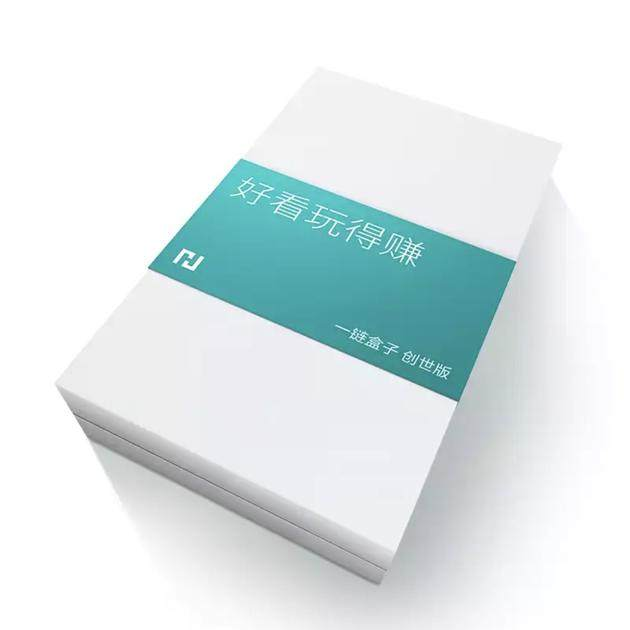
OneChain Box; Image source: Smart TV Network
This was a television box priced at 599 yuan, with built-in blockchain functionality. Users could earn OC (OneChain Token) by sharing idle bandwidth and then redeem products in the LeTV mall. For LeTV, which was already in turmoil, it felt more like a hasty self-rescue rather than a well-thought-out layout.
As soon as the product was launched, the Shenzhen Stock Exchange issued an inquiry letter, questioning whether LeTV was using the blockchain concept to hype its stock price. The regulatory intervention cast a shadow over the project overnight.
Jia Yueting originally wanted to use the "OneChain Box" to prove the commercial value of blockchain, but it was now labeled as "concept hype." LeTV quickly clarified that it did not involve token issuance or trading. However, such explanations did not change the external perception. The "OneChain Box" quickly fell silent, marking LeTV's last appearance in the blockchain field.
The failure of this project reflected the limitations of the entire blockchain industry at that time.
In 2018, the technology was still in its early stages, with few landing scenarios, and users remained skeptical about digital currencies. Regulatory policies in various countries were fluctuating, and projects inherently carried high risks. It was an era full of concepts, but any slight delay in execution could lead to a rapid decline in enthusiasm.
This episode also gave Jia Yueting a more realistic understanding of blockchain. He realized that this technology is still far from being fully realized; it requires a compliant environment and a more mature market mechanism. LeTV's attempts may have been too early and too fast, but they allowed him to see the real gap between business and technology. This understanding became a reference point for his later restart.
The crisis at LeTV took away funds and people. Interestingly, many of the employees who left later entered the blockchain industry. According to public data, at least 17 former LeTV employees dedicated themselves to the crypto world in those years, continuing to chase that unfinished dream.
The Second Half of the Gamble
In the Faraday Future factory, Jia Yueting spent the most low-key years of his life.
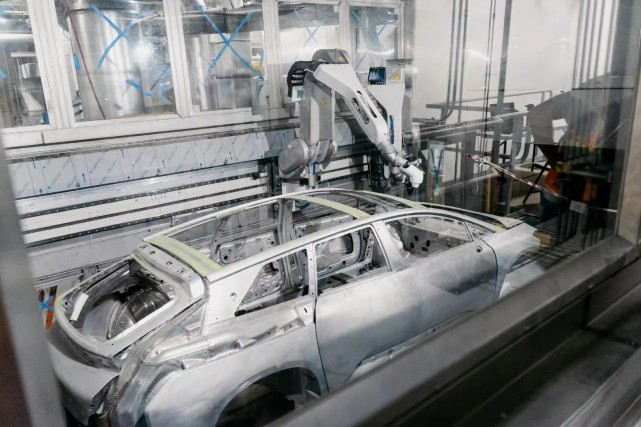
Faraday Future factory; Image source: Tencent News
From 2019 to 2024, he almost disappeared from the public eye, mired in the minutiae of car manufacturing—technical bottlenecks, tight funding, market competition, regulatory restrictions—each link was inescapable. Faraday Future faced multiple financing obstacles in the U.S., and mass production plans were repeatedly delayed, making him truly experience the complexity and slowness of the manufacturing industry.
The logic of the internet is speed, while the logic of car manufacturing is patience. This experience forced him to confront a different rhythm, one of trial and error, reflection, and correction. Between speed and risk, he had to slow down.
Meanwhile, the crypto world entered a new cycle. Tesla announced the purchase of $1.5 billion in Bitcoin, shaking the global market. Subsequently, companies like MicroStrategy, Square, and PayPal entered the fray. The massive influx of institutional funds transformed this market, which originally belonged to speculators, into one with the characteristics of compliant assets.
Between 2019 and 2024, the blockchain industry itself underwent an unprecedented iteration.
Ethereum's smart contracts gradually matured, with the scale of DeFi protocols jumping from hundreds of millions to hundreds of billions; NFTs brought digital art and virtual assets into the mainstream; DAOs made community governance a new organizational method.
Looking back at Jia Yueting's "ecological revolution" concept during the LeTV era, these new technological paths carry familiar shadows, though the context and tools have completely changed.
By 2024, the entire industry's infrastructure was unrecognizable compared to six years prior. The entry of institutional funds, the maturity of stablecoins and DeFi, and the integration with AI applications made the market more robust and operationally feasible.
Compared to the "OneChain Box" of yesteryear, the current methods and environment for testing the waters are entirely different. To return to this track, it must be built on clearer market logic and more restrained execution paths.
On August 17, 2025, in Pebble Beach, California, Jia Yueting took the stage again to announce the launch of the "EAI + Crypto Dual Flywheel" strategy.
Unlike previous press conferences, this time he presented not a new car, but a completely new business framework, binding EAI (Electric AI) with Crypto to form a bidirectional growth system.
The logic of this strategy is not complex. EAI represents Faraday Future's electric vehicle and artificial intelligence business, serving as a cash flow source for the real economy; Crypto is the other pole, leading to greater space for crypto asset management and the digital economy. The two support each other, with EAI providing cash flow support and the returns from Crypto reinvesting to drive manufacturing and R&D.
C10 Treasury is the starting point of the "Dual Flywheel" strategy. It is a crypto asset management platform that adopts an "80% passive + 20% active" strategy, with most funds strictly allocated according to the C10 index of the top ten cryptocurrencies (excluding stablecoins), while the remaining portion is managed flexibly by the team.
Passive investment acts like a foundation, maintaining structural stability; the active portion retains room for offense. As of September 18, 2025, C10 Treasury managed assets of approximately $10 million, with a floating profit of seven percentage points.
On September 20, Jia Yueting took action again. Faraday Future acquired the Nasdaq-listed company QLGN for $41 million and planned to rename it CXC10. QLGN (Qualigen Therapeutics) was originally just a small biotech company, but what attracted Jia Yueting was not its main business, but its compliant identity as a listed company and its financing channel.
This meant a ready-made capital shell.
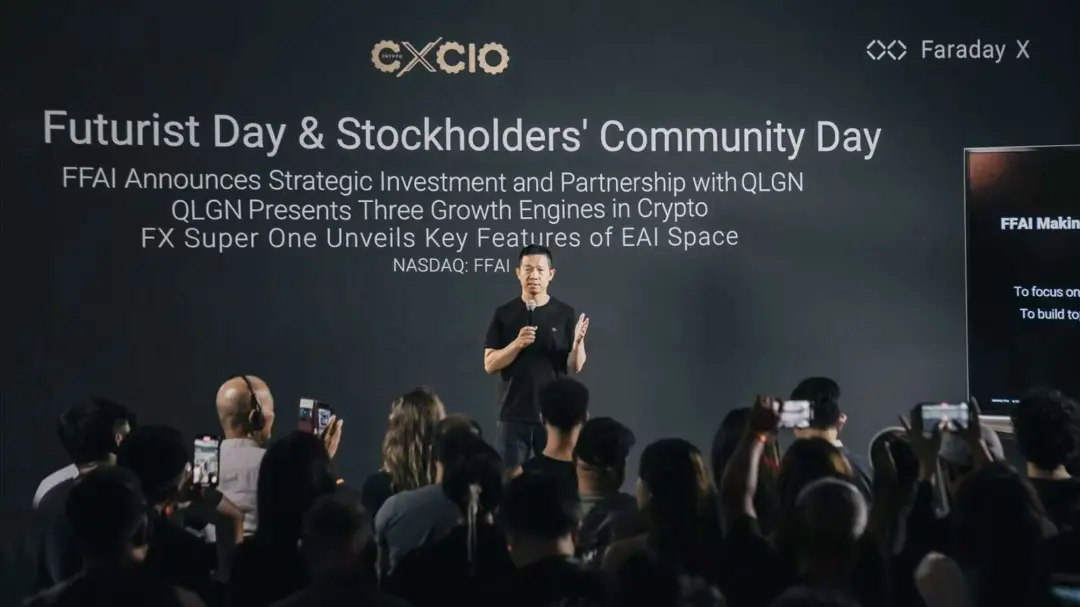
Jia Yueting at the CXC10 press conference; Image source: Faraday Future official X
In this acquisition, he personally invested $4 million, holding about 7% of the shares, and voluntarily locked them for two years. On the day the news was announced, QLGN's stock price surged by 255%, with pre-market prices jumping from $2.8 to over $10.
More importantly, a new name appeared in this acquisition: the SIGN Foundation. SIGN is a blockchain technology company backed by top institutions like Binance Labs and Sequoia Capital. Its involvement not only brought funding but also provided technical and resource backing. For Jia Yueting, this meant regaining a ticket to enter the core circle of the industry.
Compared to the LeTV era, Jia Yueting's posture is clearly different. This time, he is constructing a new story using capital structure, compliance paths, and institutional alliances. However, whether this shift is a true metamorphosis or a more refined cycle can only be answered by time.
The Unfinished Journey
Looking back from the present, Jia Yueting's business trajectory resembles a circle.
During the LeTV era, he told the story of "ecological revolution"; at Faraday Future, he painted the future of travel with electric vehicles; by 2025, he brought the "EAI + Crypto Dual Flywheel" to the forefront.
Each turn is timed with the nodes of the era and is accompanied by controversy.
The real test still lies ahead. The floating profit of C10 Treasury benefits more from market conditions, and whether it can withstand volatility remains uncertain; the logic of the "Dual Flywheel" sounds complete, but it has yet to be tested through cycles; more critically, whether he has truly learned restraint from past failures or merely changed his narrative style remains unanswered.
From the LeTV building in Chaoyang, Beijing, to the factory workshop in California, and then to the capital stage of Nasdaq, this story transcends geography and industry.
In the crypto world, stories never have a final conclusion, only the next chapter that is continuously being written.
Jia Yueting's story continues.
免责声明:本文章仅代表作者个人观点,不代表本平台的立场和观点。本文章仅供信息分享,不构成对任何人的任何投资建议。用户与作者之间的任何争议,与本平台无关。如网页中刊载的文章或图片涉及侵权,请提供相关的权利证明和身份证明发送邮件到support@aicoin.com,本平台相关工作人员将会进行核查。




